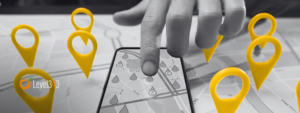You work pretty hard to get traffic to your site. So it’s no fun when you see most of that traffic bouncing off the site. If your bounce rate is high, you should take swift action to correct things!
(Not sure what a bounce rate is? Bounce rate is a very important metric for website owners. It tells you what percentage of your visitors are “bouncing” away after landing on your site.)
There is no definitive answer about what a “good” bounce rate is. Everyone has their own opinion. I look to continually improve mine. Anything above 50% and I’m concerned.
So here is a collection of tips to help you get that bounce rate down:
-
- Test! I’ve written about it before and I’ll write about it again. You should always be testing to see what the response is and to incrementally improve things. If you aren’t going to do a true A/B split test or multi-variate test, you at least need to record the time and date you make changes so you can monitor the results after your change. Some things don’t work out as planned and if you try something out that has a negative effect, you want to be able to track it and revert back to the prior version quickly.
- Review your pages with a high bounce rate and look at the keywords people are using to find that page. Does your page provide the information a person would expect to find in response to their search query? Make sure your content is useful and focuses on solving their problem. Don’t forget though, not only do you have to solve their problem but you also have to quickly and concisely convey that to them, so they see it before they bounce. (Focus on headlines, strong headlines are your best friend).
- Don’t give too many options! It’s easy to feel like you have to offer everything to everyone, since you aren’t really sure who will like what. Too many options confuse people and more often than not, confusion leads to inaction. Have you heard of the “Zeigarnik Effect”? When people are given too many choices and there are too many calls to action, there is an uncomfortable subconscious feeling of something being incomplete (our mind remembers that which is most incomplete). With so many options and things to click, people never feel fully focused on the one they clicked on because in their subconscious they feel they have the “incomplete task” of checking out the rest of the site. So keep it simple and guide them to your most desired action. Also, don’t forget, every link and button is a call to action. Whenever you put something clickable, or a form to fill out or anything like that, you are asking someone to take an action. So review your site with this in mind and ensure you are not asking visitors to do too much and make sure you place the most emphasis on the call to action that leads to your most desired action.
- Be specific. Real names, precise numbers, details all enhance your credibility and build trust. Saying 57% is much more powerful than saying “More than 50%”. People will believe you if you are specific.
- Create some urgency. Everyone is pretty busy and we all have a lot of things vying for our attention. You need your site visitors to act now, not later. Think about what you can do to create some urgency. One of the best methods I’ve found for creating urgency is using a date script to create a deadline on a special offer.
- Don’t be passive with your text. Use strong words that trigger an emotional reaction. Don’t be afraid to push the envelope a little bit. Remember, people buy on emotion and justify later with logic. So you have to press those emotional hot buttons to get people to react.
- Fear of loss is a greater motivator than desire to gain. I see some people’s eye glaze over when I say this but I think it’s important that you understand this. People are more motivated by fear of losing something than they are by the desire to gain something. So rather than tell someone they need to buy what you sell, tell them what they are losing out on by not buying it. It will motivate them more.
- Don’t be afraid to cut stuff out. If you’ve read my copywriting outline, you know that I suggest doing an aggressive edit after you write any text and eliminating anything redundant. You’ll often hear that about 20% of your copy can and should be eliminated. It’s hard to do, but it makes a big difference. Pare down your text to only what people need to know to make an informed decision. You want to establish your credibility by showing what you know, but you can choose a few key points. You don’t have to go on and on about everything you know on the topic (that is assuming this is a sales page and not an article or Blog post).
- Pay attention to formatting. Adding images, bullet points and leaving white space is important. The page has to flow nicely and be easy to read.
- Give people a reason why! Studies show that giving people a reason why they need something will increase conversions every time. That is pretty powerful. There are some great studies done on how people respond when you say “because…” and give an explanation when you are asking for something. So when you ask people to buy, tell them why they should. Play with different reasons why and see how that impacts your results.
- Benefits, benefits, benefits. If you’ve read any of my previous content you know that my biggest pet peeve is when people focus on features and not benefits in their copy. Make sure you take all the features of your product or service and break them down into benefits. Keep that list of benefits handy so you can use it over and over in your copy.
- Confront the negatives. Everyone is going to have questions, concerns and some level of skepticism at some point. If you can attack any negatives up front and dismiss the objections early in the process, you’ll do better. You may want to come right out and address a concern in your copy or use a testimonial that praises the area of potential concern. There are a lot of ways to handle it, so consider your options and decide what is best.
- Add video to the page. See if video helps your conversion rate. You can be a lot more personable and connect with your visitors via video.
- Avoid errors. Spell check everything before you take it live. Errors can hurt your credibility.
- Focus on the reader and not yourself or your company. That means say “you” more than “I” or “we”. (That tip is also from my copywriting outline)
- Don’t talk at your audience or over their heads. Be conversational and use words they are comfortable with.
- Clearly state any guarantees and policies you have in place that protect the consumer. You always want to focus on building trust.
- Make your contact info prominent (still focusing on building trust here).
- Use symbols that people trust, like PayPal or credit card logos. Seeing a logo people trust on your site earns you some of that cred.
- Add captions to your photos (and make them powerful). People are more likely to read captions than your copy. So make ‘em count.
- Lead the way. If you are using a photo of a person, use one where they are looking in the direction of the call to action. Your site visitors will naturally follow the path of the person’s vision to see what they are looking at.
- Use arrows to draw the eye to your call to action. Or put a border around your call to action text. Drop shadows on images also typically improve conversion rates.
- Be upfront. Keep your most important text and call to action above the fold (before someone scrolls).
What tips do you have to share with us? As always, we welcome comments, suggestions and feedback.








































2 Responses
From what I’ve read, bounce rate counts even if a user lands on one of your pages and doesn’t interact with the rest of the site, even though he spends like one or two minutes on that page. If this is true it’s kinda nuts because the user searches for an information, finds it, reads it and gest out. Why should that cause a bounce rate? Good tips by the way!
Thanks for sharing this effective ideas.